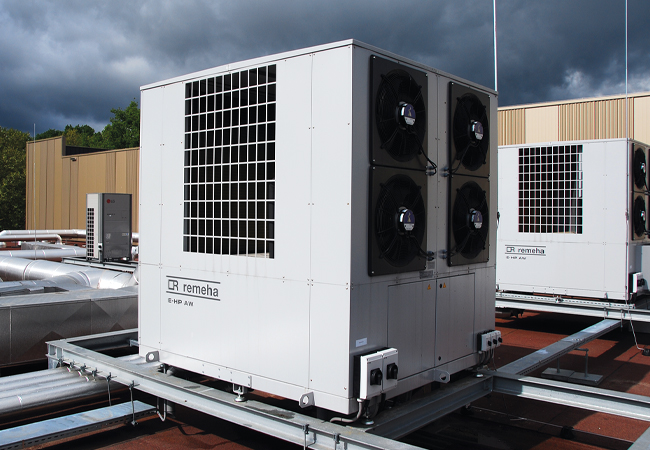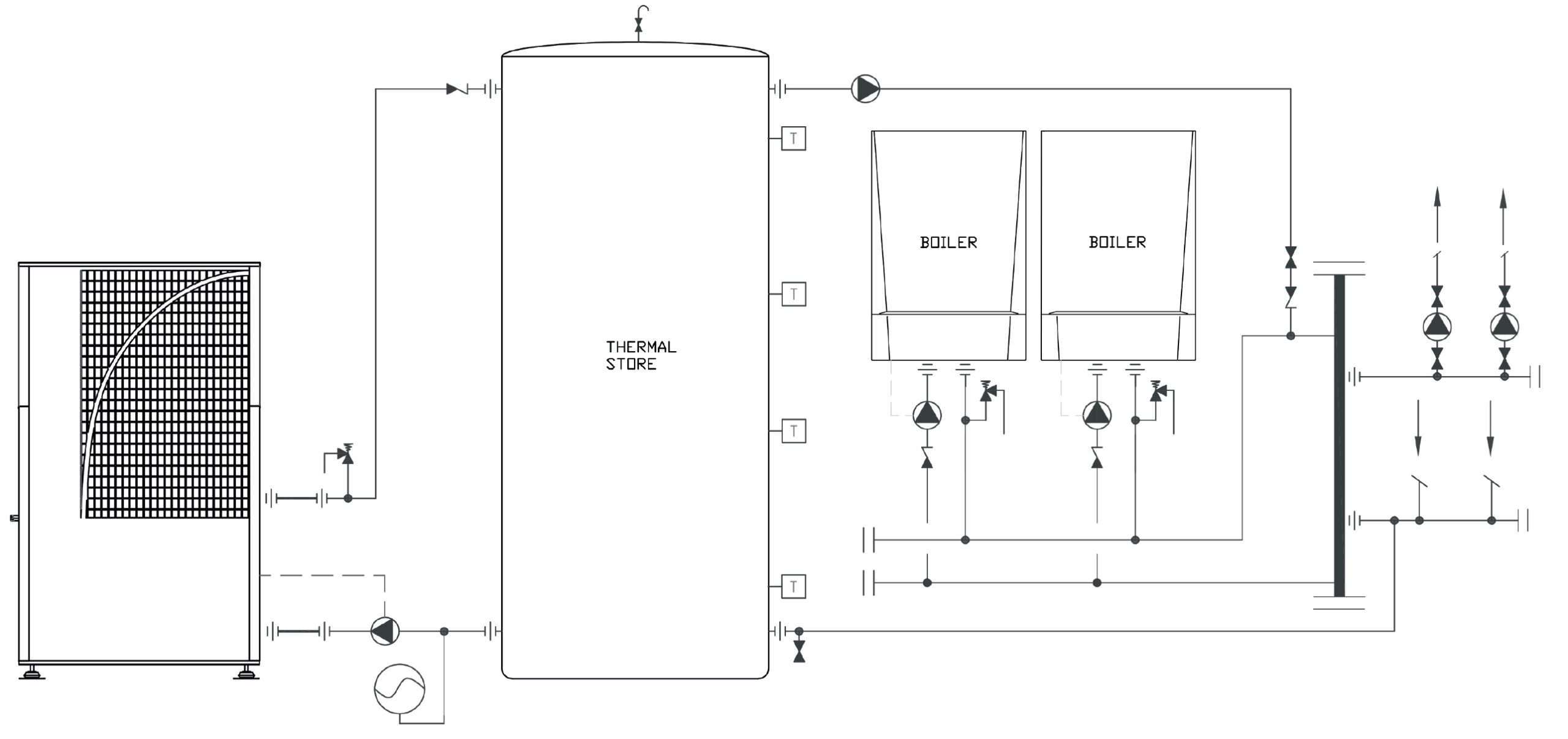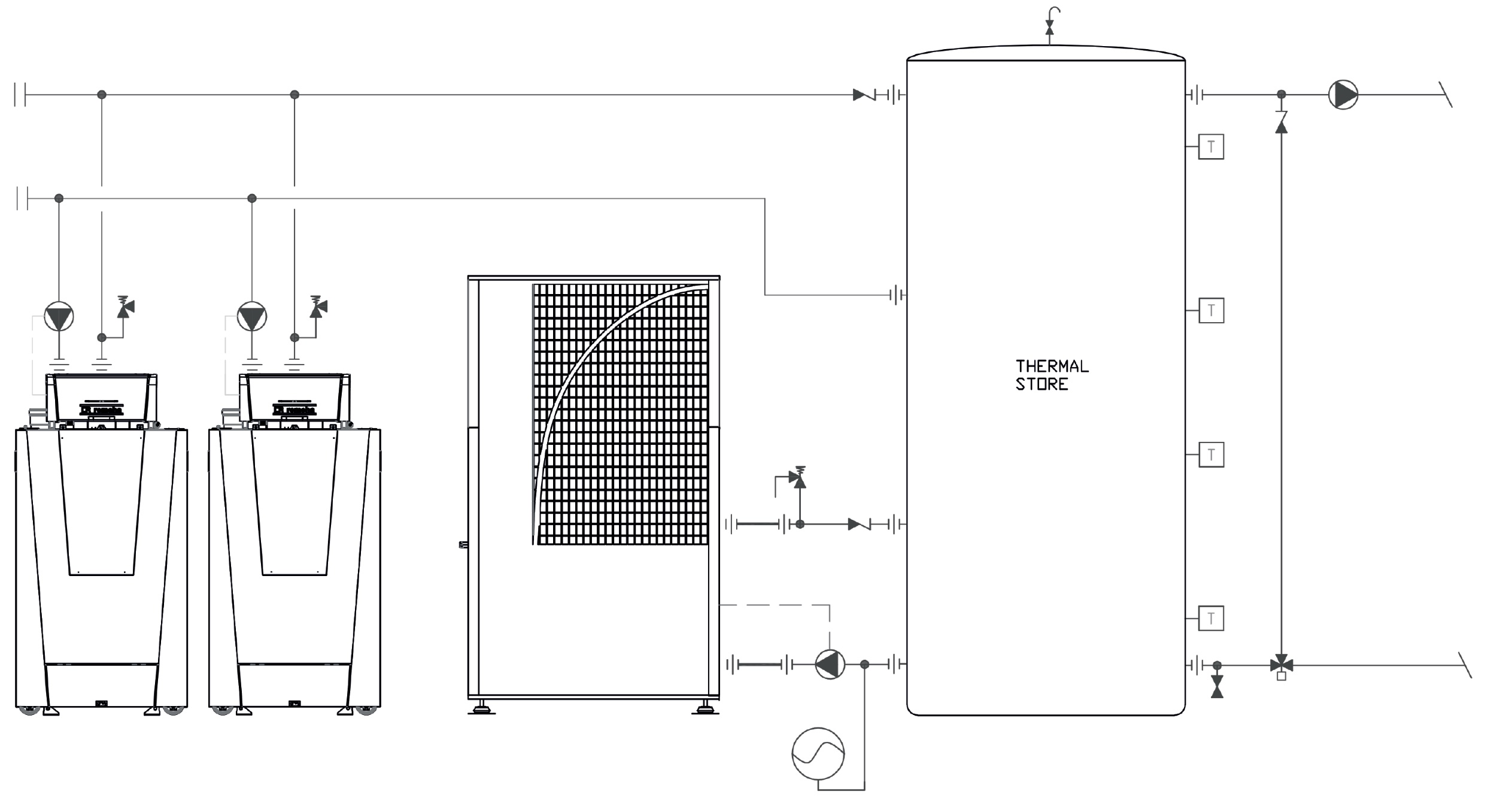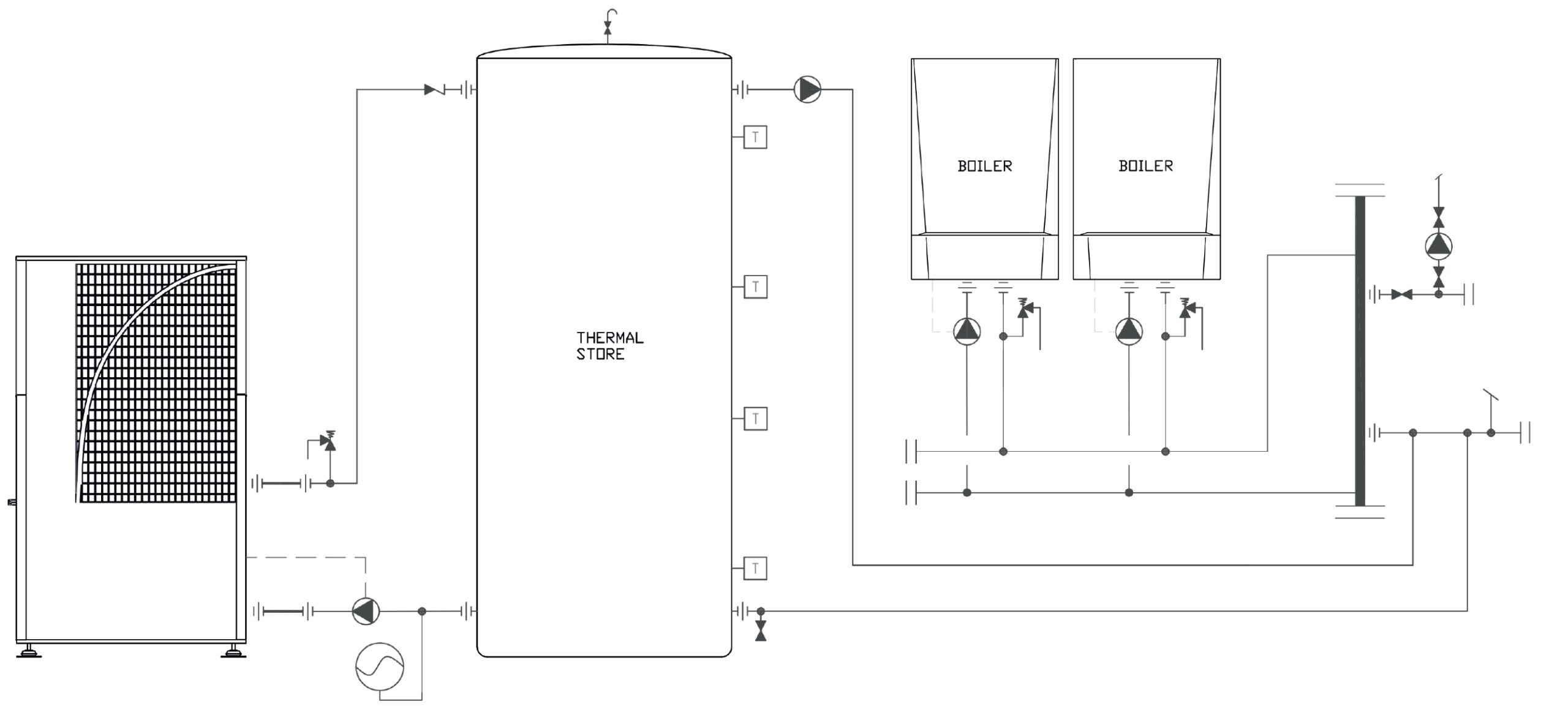
Integrating ASHPs and high-efficiency condensing boilers can overcome project limitations while meeting heat demand more sustainably
Blending traditional heating with low and zero carbon technologies (LZCT) – from combined heat and power and biomass to ground source heat pumps and air source heat pumps (ASHPs) – is a time-tested method to reduce the carbon intensity of the heating source.
A fully served ASHP building will achieve one of the lowest carbon footprints in new commercial building stock, but it is naïve to think that, at present, we can engineer all projects and budgets fully with just ASHPs. Physical space, available electrical power and/or capital expenditure budget are restrictions typically encountered.
Integrating ASHPs and high-efficiency condensing boilers in a hybrid system is often a more practicable solution, as it can overcome project limitations while meeting heat demand more sustainably. The challenge, however, is to incorporate the heat pump and boiler into a harmonious design that maximises the efficiency of both technologies.
Overcoming ASHP hybrid challenges
If a hybrid boiler and heat pump system is deemed optimal for the building type, we must first be clear on a sizing proposal that maximises heat pump contribution performance while taking account of all limitations. Second, we must ensure hydronic integration with peak or backup heat generation that does not penalise efficiency or performance of the system – which, in simplistic terms, means a balance of technology parameters.
Heat pumps provide a unique challenge in a hybrid system when paired with condensing boilers because of the temperature differential (ΔT). At the core, heat pumps work best at low flow temperatures and a ΔT of 5-10K. While condensing boilers also operate more efficiently at lower temperatures, the ΔT range for a typical commercial boiler is 10-40K.
If applying Occam’s razor principle, the approach may simply be to design to a 10K differential (an almost full circle back to our all-too-familiar 11K ΔT of older commercial heating systems). With that, however, all the advantages that larger differentials present – such as pipe sizes, circulated volume and pump duties – are now gone. So, what options are available to designers to balance out performance, efficiency and technology?

Figure 1: Load assist, ASHP lead
Load assist
Traditionally, a LZCT generator would run lead in a baseload configuration, with gas boiler(s) to assist as heat demands increased. ASHP hybrid systems can also be configured in this way, but the primary flow temperature and subsequent temperature differentials must be suitable for both the ASHP and boiler technology.
Running a full system on a 10K ΔT (pipe and pump sizes aside) would not be problematic for most pre-mix condensing boilers, but it can reduce the performance of some ASHPs that optimise at 5-7K ΔT. To benefit from maximum boiler efficiency, the return temperature must be kept below 54°C to promote condensing. One example of how this can be achieved is shown in Figure 1. To control this system, in basic terms, the ASHP charges the thermal store. The thermal store then discharges, acting as lead boiler.
As previously outlined in my article ‘Optimising thermal store design for CHP’, (March 2020 CIBSE Journal, bit.ly/CJNov21CHP), the thermal store discharge pump can ramp up and down to match building load. It should never be allowed to fully deplete, however, as this would break the stratification layer and, potentially, give a lower flow temperature than set point. Before this point, the gas boilers should be cascaded on, to duty assist with the demand. Installing heat meters provides valuable performance metrics to optimise the system and deliver live feedback to the BMS to help control the demand response.
The ratio of boiler to ASHP in this method will be project-specific. Careful consideration must be made if both the ASHP and boiler(s) are required to satisfy peak demands in terms of operational robustness. The advantages of this method are flexibility and scalability, given that both generators can run together or independently as demands fluctuate.

Figure 2: Temperature cascading, thermal store
High delta T load assist
In this method, the ASHP and boiler are operating together in a system in which the temperature differential or set point is above that which the ASHP alone can provide. A number of different methods can achieve this.
Thermal store method
With boiler and ASHP plant feeding into the same thermal store, the energy required to satisfy system loads is split. The ASHP maintains a stratified warm layer at the bottom of the tank to heat the cold return, with the boiler’s hot layer giving the final lift to reach target flow temperature.
Under dynamic load conditions, care should be taken to avoid the boiler being required to top up the temperature by less than 10K, otherwise a temperature overshoot could occur in the tank. This overshoot is generally a result of most condensing boilers being unable to operate at less than a 10K ΔT condition. The introduction of a mixing valve to blend flow temperatures down on the demand side of the thermal store can help resolve this.
The controls should ensure that the boiler contribution is held back until absolutely required. This is achieved through close monitoring of tank temperatures, at multiple points, and of boiler and ASHP temperatures.
The control strategy warrants greater discussion than can be covered in this article. Our advice, however, is to ensure a clear controls methodology is aligned during the design stage. Care should also be taken in the selection of the thermal store, to avoid mixing by making use of baffles, sparge pipes, and so on.
Injection method
This approach uses the gas boiler to boost the flow temperature to set point at times when the ASHP is unable to satisfy the demand differential.
There are many permutations of this method, a variant of which is used on the flow header to correct underperforming biomass boiler set-ups.
This particular method, however, works on the return header prior to a low loss header (LLH). The thermal store discharge pump controls the charge and discharge cycle of the thermal store. Under low load conditions the store may be charged to system temperatures, to give usable heat without the requirement of the boilers cascading on (albeit for a finite period). During periods of high demand the thermal store injection will pre-heat the return for top up by the boilers. Ensuring proper discharge/charge cycling of the store is critical to the performance of this method.

Figure 3: Heat injection, return header
Pre-heat efficiency loss, net efficiency gain.
We lose approximately 1-2.5% overall efficiency in a gas boiler when preheating a 30°C return by 5-10K, because of slightly reduced condensing efficiency. This modest loss in efficiency is massively countered by the renewable element of the ASHP efficiency. Provided the ASHP is not pre-heating the boiler return above condensing temperatures, the slight loss is acceptable to achieve a net gain.
Avoiding conflict
We have often seen primary and secondary heat-generation methods fight against each other, at the cost of system efficiency. So, it’s crucial that flow and return temperatures, ΔTs, controls and, ultimately, the detailed hydronic design are taken into careful consideration when blending the technologies. Addressing and avoiding this conflict at the outset will help ensure optimal system performance and outcomes.
Along with standalone, purpose-designed ASHP systems, hybrid systems offer the opportunity for important efficiency gains and emission reduction from heating in existing and new commercial premises.
In future articles, I will explore DHW generation and where this sits within standalone and hybrid heat pump systems, and take a detailed look at more innovative methods of hybrid heat generation.
■ Ryan Kirkwood is the heat pump business development manager at Baxi Heating




